Setting up opportunities for open ended sensory and fine motor play doesn't need to be difficult or overly complicated. The activity I'm sharing today is one that evolved after my girls pulled out the box of pebbles and gems along with a *ahem* small container of milk container lids.
I often read comments on social media telling other educators that they need to get rid of the ‘popular brand toys', ‘plastic toys' and pretty much everything that isn't classed as a loose parts, natural or open ended material. I don't believe in this action. I love loose parts and do prefer them but sustainable practice means that we also try to find alternate ways of using the materials we already have to encourage more open ended play opportunities.
It's not about throwing out what we already have and buying new expensive wooden or ‘recycled' resources. It's about thinking outside the box , simplifying and reusing or upcycling where possible.
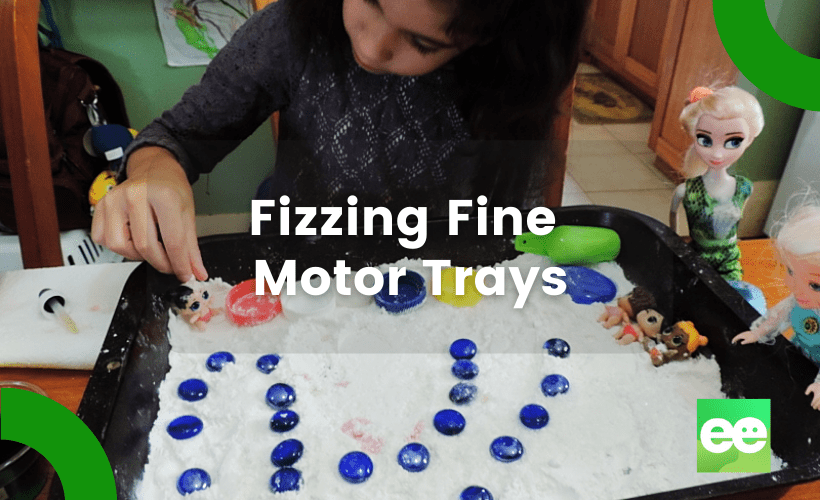
My twins currently have a strong interest in all things cause and effect as well as Frozen dolls (and some weird baby things that come in a ball but I can't remember the name of them) at the moment but they also love their loose parts so I decided to offer some trays for them to create their own small worlds and direct their own play.
Such a simple activity suited to an age range from 3-8 years depending on the materials you provide. Want to give it a try? You'll be amazed at how quick this activity is to set up!
What you need
- Baking trays or flat surface tubs with a raised side.
- 2-3 cups bicarb soda (this will depend on how many trays you are setting up).
- A sprinkle of epsom salts to add to the sensory exploration (optional and not needed for the fizzing!)
- Loose parts of your choice – we used old scoops, gems, coloured flat stones, and plastic milk lids.
- A few bowls or cups of vinegar with food colouring mixed in (or edicol paint dye which is what I used).
- Old medicine droppers or large turkey basters.
- Figurines, cars, dolls, animals or other small toys the children are currently interested in.

What you can do now.
This activity is so simple to setup and then you can step back and watch the play unfold in different ways.
Add the bicarb soda to the baking trays to form a thin layer across the bottom. Leave the loose parts and other toys easily accessible for the children to self select.
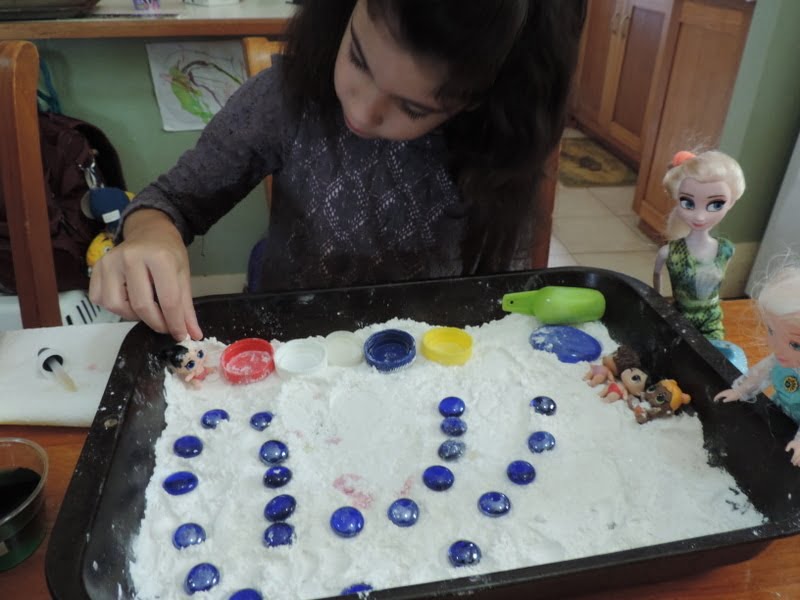
Before introducing the vinegar and droppers just allow them to explore the sensory tray with their hands and begin arranging their own small worlds. Ruby became very involved in making pathways for the babies using the gems. The lids became pools , puddles at even boats at different times throughout the play.
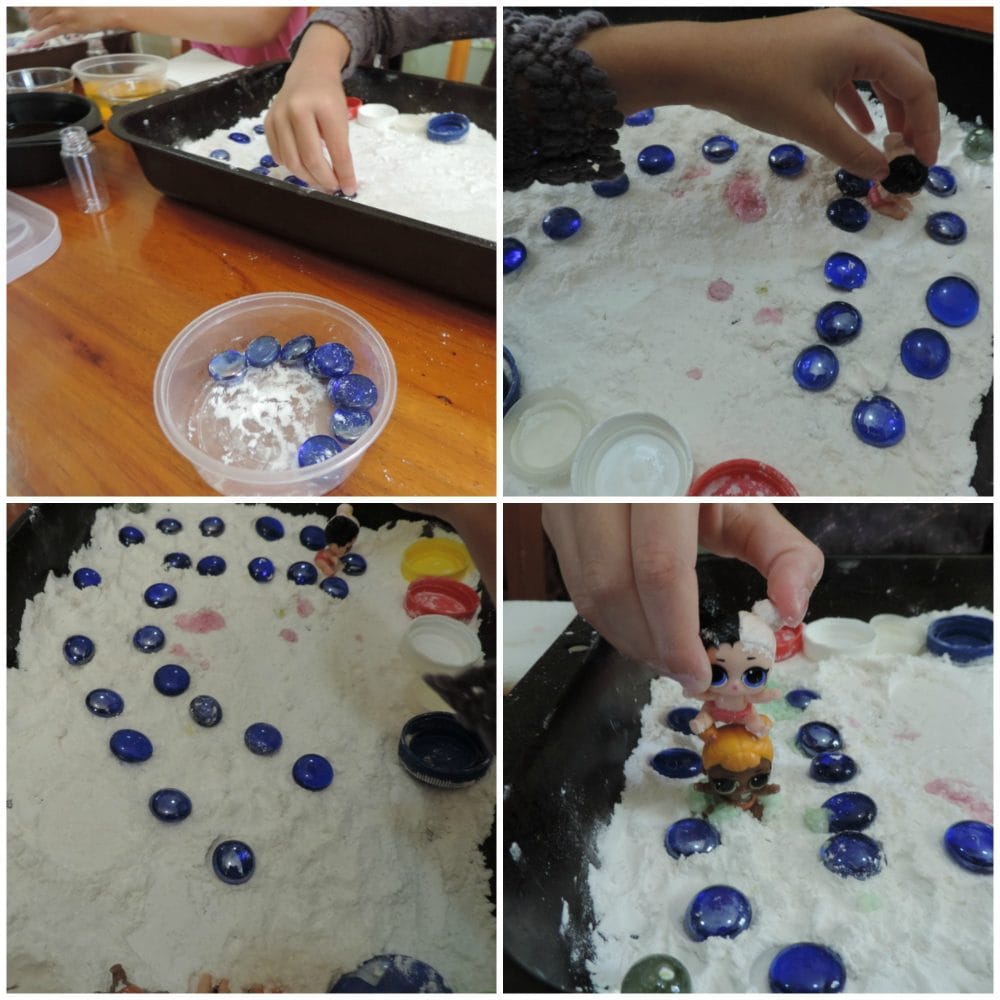
To extend the play and encourage investigation and experimentation add the bowls of coloured vinegar to the table and show the children how to squeeze droppers to draw up some of the liquid then release onto the bicarb tray.
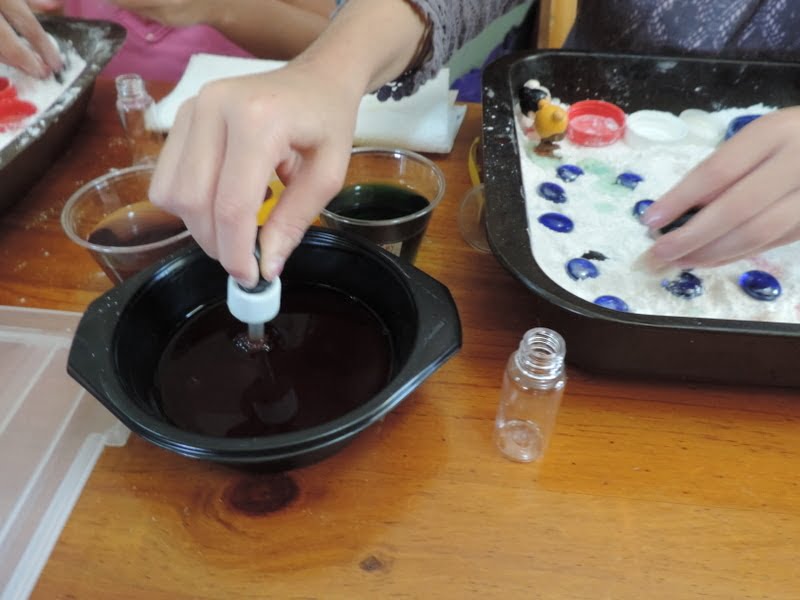
As the vinegar drops onto the bicarb there will be a fizzing reaction and little eruptions. My girls began to target where they wanted to add their ‘fizzes and colours' – obviously younger children will just drop the vinegar anywhere, but it will provide just as much fun. If they find the droppers to difficult at this stage just add a few teaspoons for them to use.
You could of course use jugs and cups but in my experience the activity then finishes very quickly and you only end up with one or two fizzing puddles and they lose interest. The droppers and teaspoons slow down the play!
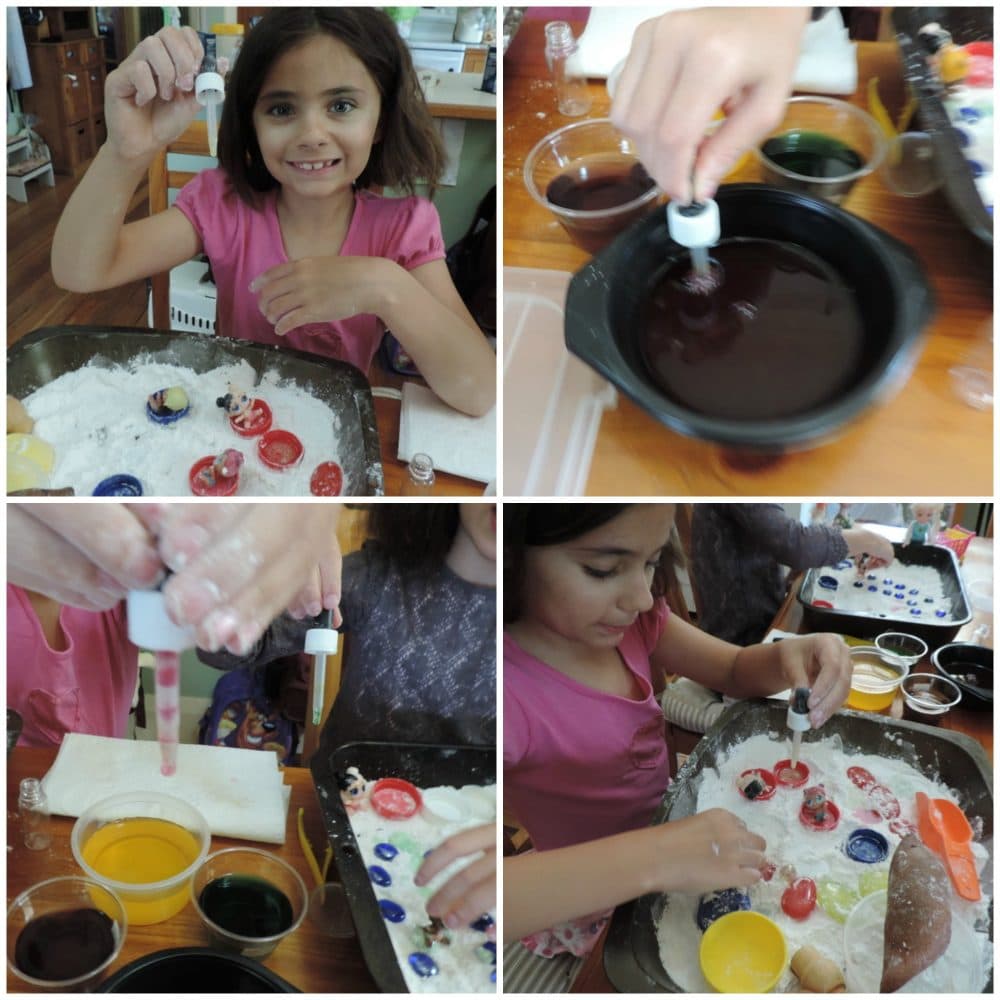
The milk bottle lids became spa baths with fizzy water and much more as the imagination and play evolved.
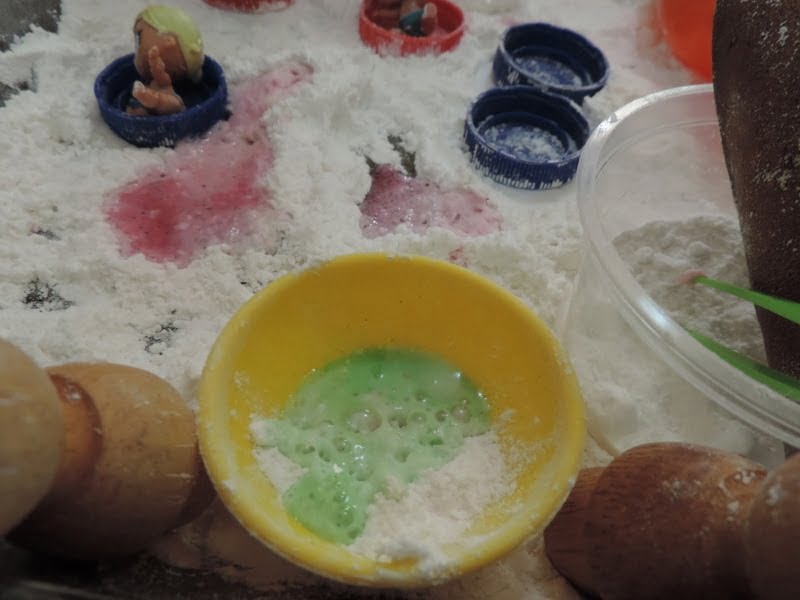
The beauty of introducing open ended materials to experiences like this is that the children can decide how they want to extend their own play and make decisions about how they want to use the materials alongside the more closed or traditional items like dolls. There is room to combine both types of resources when it comes to play.

These sensory trays might not look like the pretty small world setups or invitations that you usually see – they are messy, unstructured and don't have any sort of theme. BUT they are unique, child led, creative, fun for little fingers and imaginations and encourage investigation and experimentation with different sensory materials.
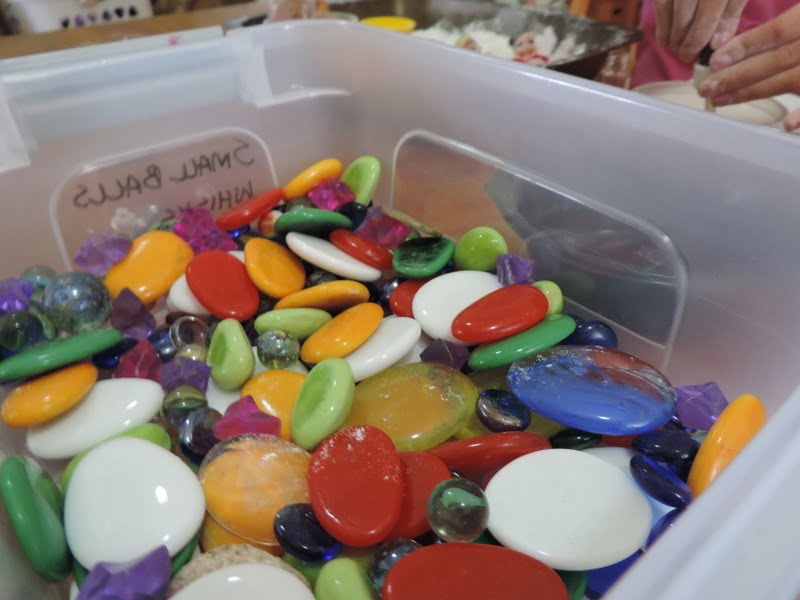
One little tip though – don't forget to tip out the trays and wash everything within a few hours like I did or you might end up with a lovely rock hard landscape like this that is VERY difficult to clean.
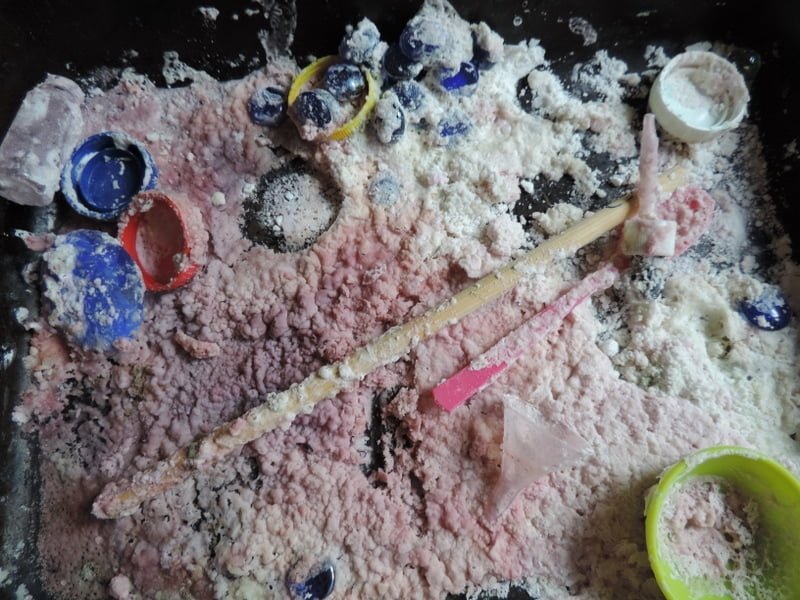
On the positive side… because we also used a handful of epsom salts for extra sensory fun….we also created our own crystals a few days later! I'm pretty sure my baking tray is now a play tray forever though #keepingitreal !!
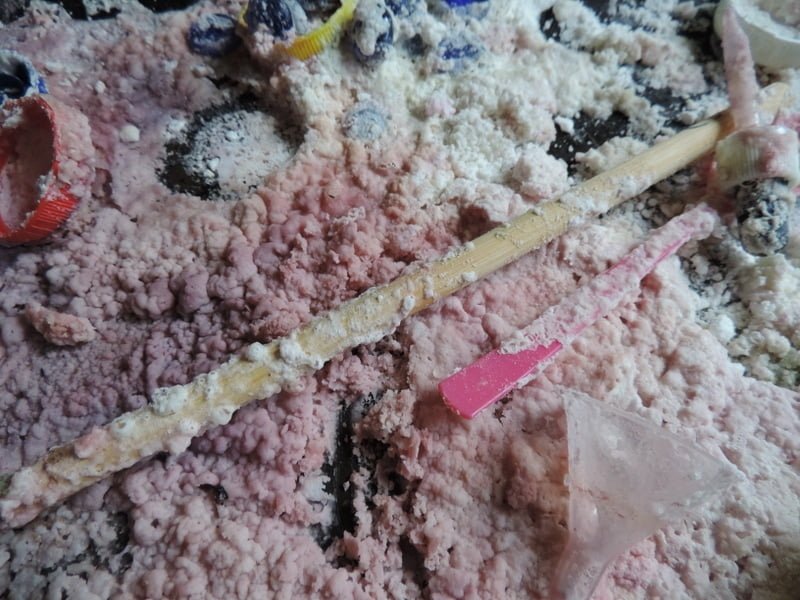
Find more ideas like this for early learning and network with other early childhood educators from around the world in The Empowered Ed Community or on my Fine Motor Pinterest Board.
A Little About Me

Jodie Clarke is an early childhood professional supporting educators who want and need to stay passionate about the work they do! She has 30 years hands-on experience in the early childhood and human services sectors across many different roles.
Jodie is mum to 3 in Australia and has already helped thousands of educators with their work through her popular blog posts, activity ideas, online training and e-books.

Looks inviting I will give it a go. Thankyou Jodie